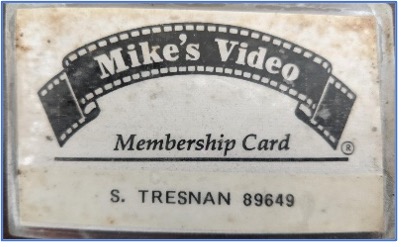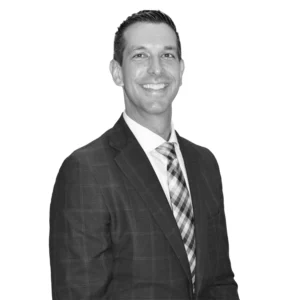“A horse is dangerous at both ends and uncomfortable in the middle.” -Ian Fleming
The above quote may not be perfect for today’s topic, but a) it’s pretty funny and accurate, and b) Ian Fleming holds a special place in my heart as the creator of Mr. James Bond, and it will be completely sufficient for our needs.
GoldenEye
During our freshman year at Penn State in 1998-‘99, my dormmates and I trekked from South Halls to Mike’s Video – our local video store – countless times. We’d go there just about every other day, sometimes in the rain, cold, or snow, often to rent the new releases we hadn’t seen. But, there’s one particular stretch of VHS rentals that stands out in my memory.
Inspired by the wildly popular N64 video game of that time, GoldenEye, and our shared affinity for the James Bond movie it was based on, we went on a mission to watch every James Bond movie that Mike’s Video had in its library. From Sean Connery to George Lazenby, Timothy Dalton, and Pierce Brosnan, we watched as many as we could get our hands on, usually in classic low-def VHS format. And, after recently cleaning out our house from top-to-bottom, I stumbled upon this gem in a box of stuff that no one needs:

Blah, Blah, Blah
The New York Times recently featured an article about an apparently common emotional reaction to the ongoing socially restricted recovery: There’s a Name for the Blah You’re Feeling: It’s Called Languishing. Languishing, I learned, is the state of existing somewhere in between living your best life and the depths of depression – or, more succinctly, “the absence of well-being.” And, rather than languishing indefinitely, there’s also evidence to suggest that this emotional middle-ground can lead to increased incidence of depression in the future.
Given our coverage in the previous alt.Blend of how the status quo is unlikely to persist into the future, this emotional-status migration is not surprising. Some thriving today may be in the depths of despair a few years from now, and the opposite may very well be true for some currently enduring painful depression. And those now languishing may find they have moved in one direction or the other, for better or worse.
The Ruse
Practically speaking, here’s how investment funds often attract assets: they build a track record that makes a case for them being a “good manager.” In other words, they have to avoid languishing for an extended period, performing well for at least long enough to get more investors’ attention (and money). How long is that? I’d say it’s generally about three years, as that’s one of the standard parameters used by investment analysts to filter through the universe of available funds.
Fund managers know that posting solid 3-year numbers – e.g., in the top quartile (25%) or decile (10%) of their peer group – will start garnering additional interest from analysts, along with eligibility for a Morningstar Star Rating. In the Star Rating system, beating your peers will earn you 4 or 5 stars and broader exposure to the collective radar of potential investors. Note: For those unfamiliar with it, Morningstar is software that allows everyone from retail investors to investment professionals to analyze investments across a spectrum of free and paid versions.
I’ve got nothing against Star Ratings, in and of themselves. If you want to find funds that have outperformed their peers and don’t have software that allows you to set up your own parameters for screening/filtering, they can be helpful. But, even if you have access to more advanced software and databases, that may not be any better because the issue is not figuring out what HAS happened, but rather what WILL happen. i.e., the goal is to determine which funds will outperform in the future (aka “performance persistence”), and – as we’ll see below – evidence suggests that choosing funds based on past performance (e.g., via highest Star Ratings) could be among the worst ways to accomplish this. Thus, our inherent human affinity for wanting to choose what has worked in the past is – in the words of Randal from the movie Clerks – nothing more than a cunning attempt to trick you: a ruse.
Flip the Coin
In a study of domestic equity funds, Berlinda Liu of S&P Dow Jones Indices examined performance persistence in more detail by comparing the five-year performance of top-quartile funds from 2010-2014 vs. their performance over the next five years (2015-2019), and the conclusions are pretty telling. Of the top-quartile funds in the first period, only 21% remained in the top quartile over the subsequent five-year timeframe, and only 36% remained in the top half. Thus, past outperformance led to future outperformance only about one-third of the time. Yikes!
The lack of persistence generally held true across sizes (large-cap, mid-cap, small-cap). Also, when using only one year’s performance to pick persistent future winners, the odds became much worse. For instance, 2015’s top-quartile funds had a near-zero chance (0.18%) of remaining in the top quartile consistently each year during the 2015-2019 period. My “two cents” on that specific example is that 2015 was a pretty flat year for domestic equity markets, as the S&P 500 returned 1.38%. Therefore, 2015’s top performers weren’t the funds one would expect to have outperformed in the rising-market period of 2016-2019 (respective annual S&P 500 returns of 11.96%, 21.83%, -4.38%, and 31.49%; source: Zephyr StyleADVISOR), and I view this to be a worst-case example. I still wouldn’t recommend it in any other year, though.
A more important takeaway is that very few funds can register in the top quartile each and every year. Maybe that’s okay because different market segments and styles tend to come in and out of favor, and most strategies aren’t designed or intended to work well ALL of the time. Also, fortunately, the worst performers of the first five years were most likely to fail in the subsequent five years, as 38% of the initial bottom-quartile funds merged or liquidated by 2019. Interpretation: bottom-fishing is also not an advisable strategy.
When examining the full Persistence Scorecard study, we can garner a few more valuable insights:
- Fixed income funds had similar results for non-overlapping five-year periods. But non-overlapping three-year periods showed better performance persistence.
- For domestic equity funds in the top half of 2010-2014 performance, only slightly more than half remained in the top half for the overall 2015-2019 period – about as good as a coin flip.
- Only about 5% or less of funds (depending on size) were able to consistently be top-half performers for each year of 2016, 2017, 2018, and 2019; i.e., even being a consistent top-half fund year-after-year is extremely rare!
Consistency to the Inconsistency?
One final takeaway I’m interpreting from the Dow Jones data tables is this: during non-overlapping 3-year periods (2014-2016 vs. 2017-2019), choosing funds from the bottom three quartiles in the first period provided better chances of outperformance in the second period; i.e., choosing a top-quartile fund was statistically the worst approach. In fact, 4th-quartile funds provided the best odds of subsequent outperformance.
BUT, when the timeframe was expanded to non-overlapping 5-year timeframes, selecting a top-quartile fund from the first period provided the best chance of having a top-quartile fund in the second period; i.e., past winners had the best chances of being future winners, even if those odds are about 1 in 5. Essentially, it’s the opposite story of the 3-year picture.
There’s no way for me to tell for sure, but my guess is that we see the phenomenon of mean reversion play out in the 3-year numbers. At the same time, the 5-year periods are long enough that a handful of managers with the most consistent and disciplined processes may be able to stay at the top of the pack.
No Right Answer?
Either way, in terms of long-term viability, we now know that choosing top-performers isn’t a good strategy, choosing bottom performers is not a good strategy, and choosing languishing funds isn’t a good strategy. Only a select number of managers from each quartile will become the best performers of future periods, and the odds are against us in trying to pick them.
Although we can’t forecast future returns, we can seek consistent investment strategies that can then be used to construct portfolios strategically. THAT’s where we need to focus our attention. There is no right answer when it comes to past returns, but there are correct answers when investigating the details of underlying investment strategies.
Alternative Thinking
Which finally brings us around to Alts. I suppose this entry has been somewhat of a ruse itself, as it has focused solely on public/liquid funds as a lead-in for an Alts discussion. Do you think the same lack of performance persistence holds true on the alternative side of the investment spectrum, or can we pick future winners by, well, picking past winners? Along with some thoughts on investment strategy, that’s what I will try and figure out for us in the next part of this two-part series.
Until next time, this is the end of alt.Blend.
Thanks for reading,
Steve


